1. Gene Prediction and Annotation
AI and deep learning have revolutionized gene finding in microbial genomes by learning complex sequence patterns beyond simple homology. Modern AI tools can automatically scan raw DNA for coding regions, gene boundaries, and regulatory elements, annotating thousands of genomes far faster than manual methods. These models capture contextual cues (like codon usage and structural motifs) to predict novel genes and gene functions, even in poorly studied microbes. As a result, researchers can rapidly build and update genome annotations, accelerating discoveries of new enzymes, biosynthetic pathways, and microbial traits relevant to ecology and biotechnology. The net effect is a dramatic scaling up of genome annotation throughput and accuracy, letting scientists interpret massive sequencing projects with minimal human curation.

In one 2025 study, a lineage-aware AI gene prediction approach was applied to 9,634 human gut metagenomes, which increased the number of identified protein clusters by 78.9%, revealing about 3.77 million previously hidden small proteins
2. Pathogen Detection and Classification
AI significantly speeds up detection and identification of pathogens from genomic or imaging data. Machine learning models can quickly compare pathogen DNA sequences to vast reference databases, flagging species or strains with high accuracy and even spotting novel variants without classical primers. In clinical labs, AI-driven pipelines process raw sequencing or mass-spectrometry data to classify bacteria, viruses, and fungi in minutes instead of days. This rapid classification supports real-time diagnosis (e.g. in outbreaks) and informs treatment decisions early. Moreover, AI tools can integrate multiple data types (genome, symptoms, imaging) to improve pathogen identification in complex samples like metagenomes or biopsies. Overall, AI brings greater speed and sensitivity to detecting the exact microbe causing disease.
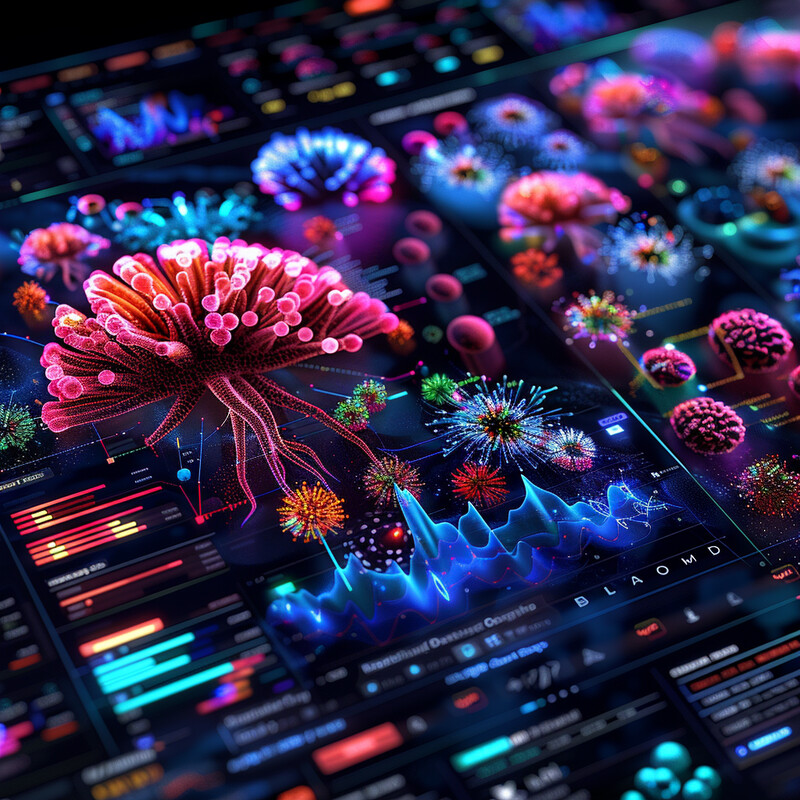
Researchers developed an AI framework that processed 5.7 million SARS-CoV-2 genome sequences in just 1–2 days on a standard laptop, efficiently clustering and highlighting emergent COVID-19 variants. Traditional methods would have taken orders of magnitude longer.
3. Antibiotic Resistance Prediction
AI models can predict antibiotic resistance profiles by learning genetic signatures of resistance from microbial genomes. By training on large datasets of pathogens with known drug susceptibilities, machine learning (e.g. random forests, neural nets) learns which mutations or gene patterns confer resistance to specific antibiotics. These predictors can then scan a new genome or metagenome and flag likely resistance, guiding treatment choices faster than culture-based tests. In practice, this enables proactive antibiotic stewardship: clinicians can avoid ineffective drugs within hours of sequencing, improving outcomes and slowing resistance spread. AI also helps in drug development by identifying new resistance genes. In summary, AI adds speed and foresight to managing antimicrobial resistance.
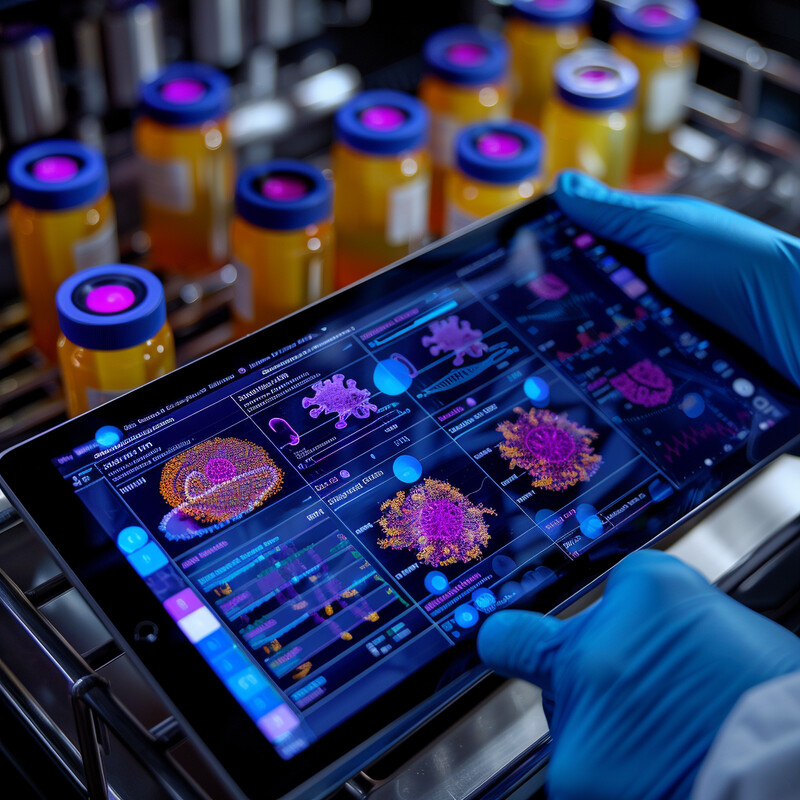
In 2024, Cleveland Clinic researchers trained AI algorithms on ~6 million urinary tract infection cases and showed the models could predict patient-specific antibiotic susceptibilities up to 3 days earlier than standard culture results.
4. Microbial Interaction Analysis
AI (especially network and graph-based models) can disentangle complex interactions among microbes in communities. Deep learning frameworks like graph neural networks take co-occurrence and abundance data to infer symbiotic or competitive links between species. This approach reveals microbial networks (who “talks” to whom) in environments ranging from soil to the human gut. Understanding these interactions is crucial for ecology (e.g. nutrient cycling), agriculture (soil health), and health (microbiome balance). AI can identify keystone species and predict how perturbations (like antibiotics or diet) will ripple through the network. In all, AI-driven interaction models give scientists a systems-level view of microbial ecology far beyond single-species studies.
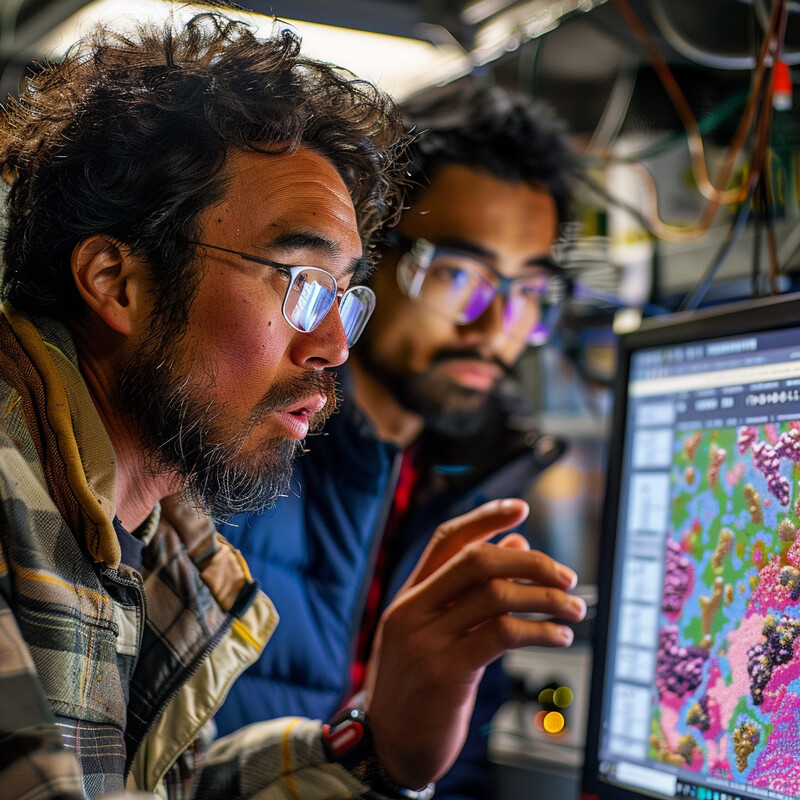
A graph neural network model (WSGMB) that used AI to analyze microbial co-occurrence networks achieved an AUROC >0.7 for detecting colorectal cancer–related bacterial biomarkers, demonstrating its ability to learn disease-linked microbial interactions.
5. Epidemiological Tracking
AI helps epidemiologists track and predict infectious disease spread by analyzing pathogen genomes and related data. Machine learning models can integrate sequenced genomes from outbreaks with metadata (time, location, host) to infer transmission chains and hotspots in real time. This genomic surveillance is much faster with AI: models cluster sequences, identify outbreak lineages, and forecast trends without the heavy computational cost of classical phylogenetics. Such AI-powered tracking has been used in COVID-19 and other pandemics to flag emerging variants or hotspots weeks before traditional methods. As a result, health authorities gain earlier warnings and more precise mapping of how microbes move through populations.

In a recent study, an AI framework processed 5.7 million SARS-CoV-2 genomes in 1–2 days to flag new high-risk variants, automating what normally requires extensive manual analysis.
6. Metagenomic Analysis
AI streamlines the analysis of metagenomic sequencing (environmental or community DNA) by classifying and annotating vast numbers of sequences. Deep learning models and specialized classifiers can rapidly sort reads into taxonomic groups or functional categories without full assembly. This allows researchers to profile microbial diversity in soils, oceans, or human microbiomes at unprecedented scale. AI can also bin sequences into genomes, predict genes in each bin, and infer metabolic pathways, revealing community functions. In effect, AI transforms raw environmental data into catalogs of species and genes, uncovering microbial “dark matter” that traditional methods miss.
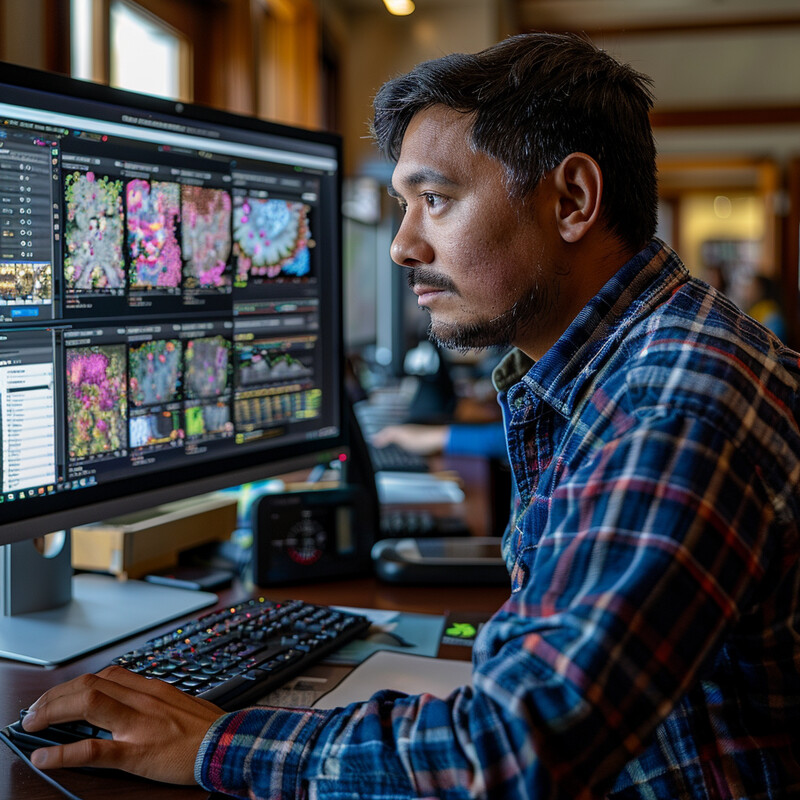
A lineage-specific AI annotation applied to 9,634 gut metagenomes increased identified protein families by 78.9% and added ~3.77 million small protein clusters to the human gut microbiome catalog, showing how AI dramatically expands our view of microbial diversity.
7. Synthetic Genome Design
AI aids the design of synthetic microbial genomes and genetic circuits by predicting how DNA changes affect organism performance. Generative models (similar to language models) can output novel gene or pathway sequences with desired traits (e.g. higher yield or new product). AI also optimizes codon usage and regulatory elements for engineered microbes. These tools speed up synthetic biology: instead of trial-and-error, researchers can generate candidate genomes in silico and prioritize those most likely to work. Ultimately, AI shortens the design–build–test cycle in bioengineering, enabling creation of synthetic organisms for biofuels, drugs, and biotechnology with higher efficiency.
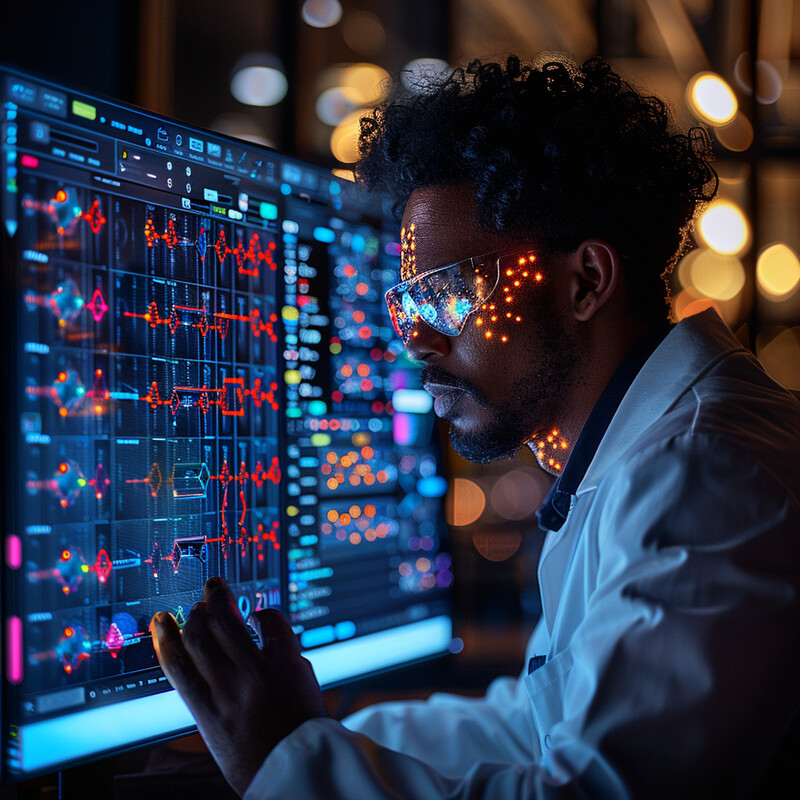
A 2024 study introduced Evo, a 7-billion-parameter AI genomic foundation model trained on 2.7 million microbial genomes. Evo can generate realistic genome-scale sequences and even design functional CRISPR systems. In experiments, Evo successfully created synthetic CRISPR and transposon elements validated in the lab.
8. Evolutionary Studies
AI is increasingly used to infer microbial evolutionary histories from genomic data. Deep learning approaches can model mutation patterns and phylogenetic relationships more quickly than classical algorithms. For instance, neural networks trained on genomic alignments can reconstruct phylogenetic trees with accuracy comparable to or even surpassing traditional maximum-likelihood methods. AI can also detect signals of horizontal gene transfer or co-evolution in big data. By automating these analyses, researchers can chart microbial speciation and adaptation events (e.g. antibiotic resistance evolution) across vast genome databases. In short, AI provides powerful new tools for exploring how microbes have evolved and diversified.
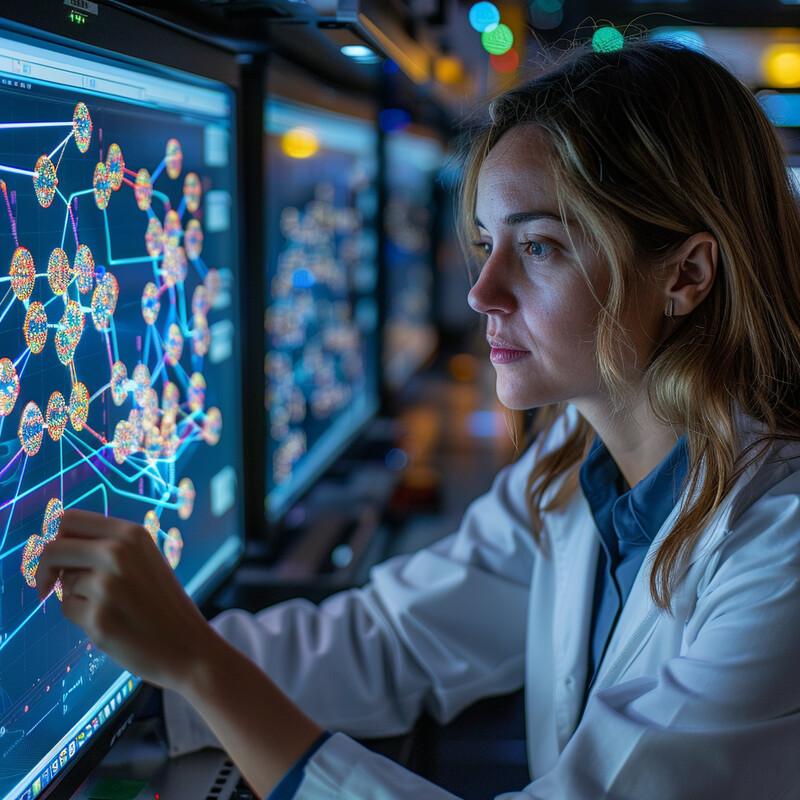
In 2024, Kulikov et al. showed that neural-network classifiers could reconstruct small phylogenetic trees with accuracy matching maximum-likelihood methods, demonstrating AI’s ability to capture evolutionary relationships.
9. Functional Genomics
AI integrates genomic, transcriptomic, and proteomic data to predict gene and protein functions in microbes. Deep neural networks learn complex sequence and structural patterns to infer enzyme activities, GO terms, or metabolic pathways. These models excel at annotating proteins with no known homologs, illuminating functions in novel microbes or metagenomes. AI-based pipelines can link gene presence to phenotypes (e.g. metabolite production) by analyzing large multi-omics datasets. This accelerates understanding of microbial physiology and network of interactions (e.g. which genes work together in a pathway). Overall, AI-driven functional genomics provides richer biological insight from sequence data than was previously possible.
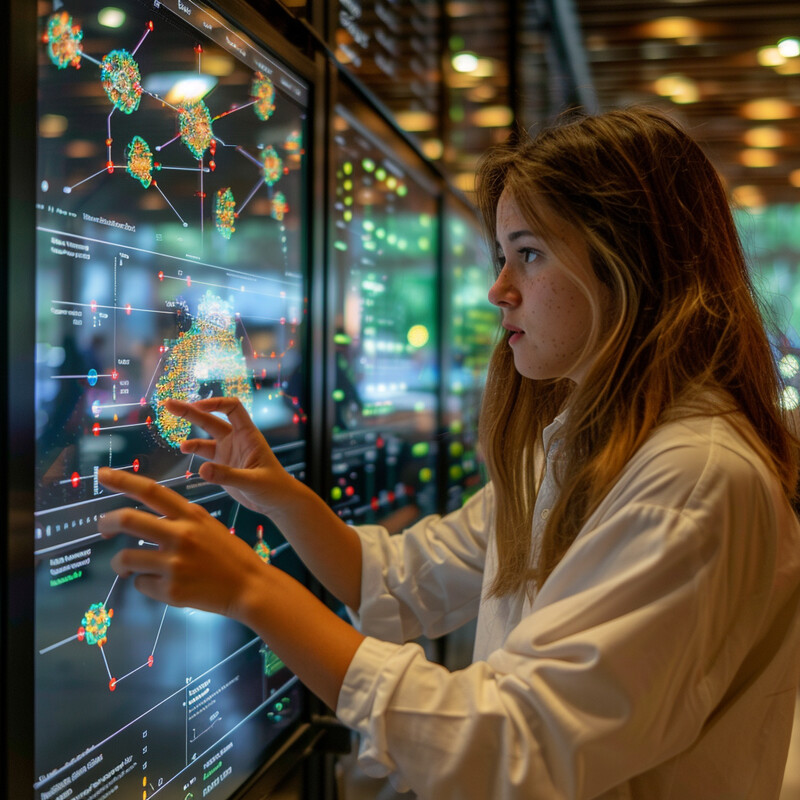
DeepGOMeta (Tawfiq et al., 2024) is a deep-learning model for microbial protein function (GO terms). On benchmark tests it achieved a top Fmax score of 0.476 in the Biological Process category (significantly outperforming baseline methods), illustrating improved function prediction for microbes.
10. Personalized Medicine Applications
AI uses microbial genomics to tailor treatments and interventions to individual patients. For example, models can predict how a person’s unique gut microbiome will respond to a drug or diet, enabling precision nutrition and medicine. AI analyzes personal microbiome data along with clinical factors to suggest customized probiotics, dietary plans, or antibiotic regimens that optimize health outcomes. In oncology, AI-driven microbiome profiling helps predict patient responses to immunotherapy. Overall, AI bridges individual microbial and host data, moving medicine away from “one-size-fits-all” to personalized strategies based on microbial genomics.

In a 2025 clinical trial, an AI-driven personalized diet intervention led to a significant shift in participants’ gut microbiomes: species richness (Chao1 index) rose by ~10% (p=0.024) and phylogenetic diversity by ~12% (p less than 0.0001) after the AI-tailored program.